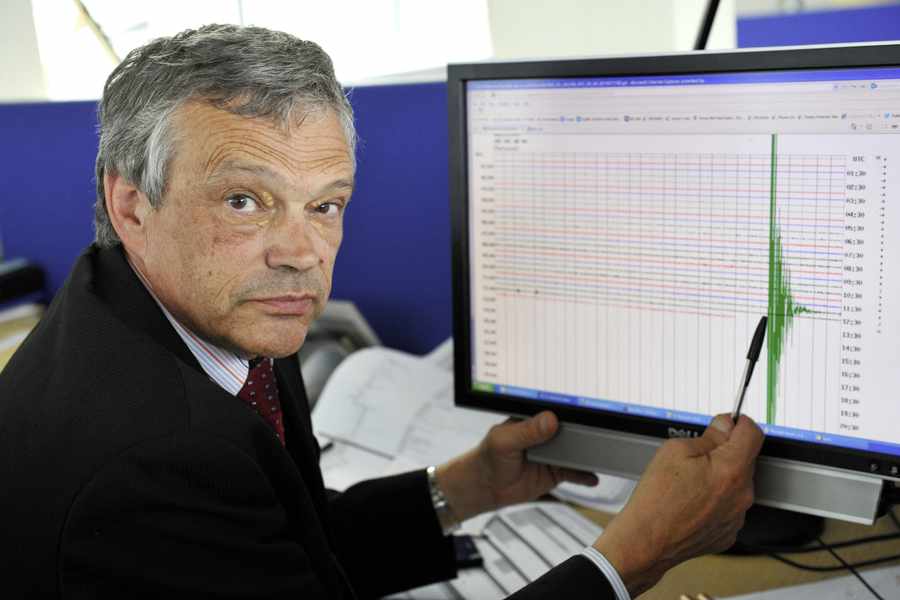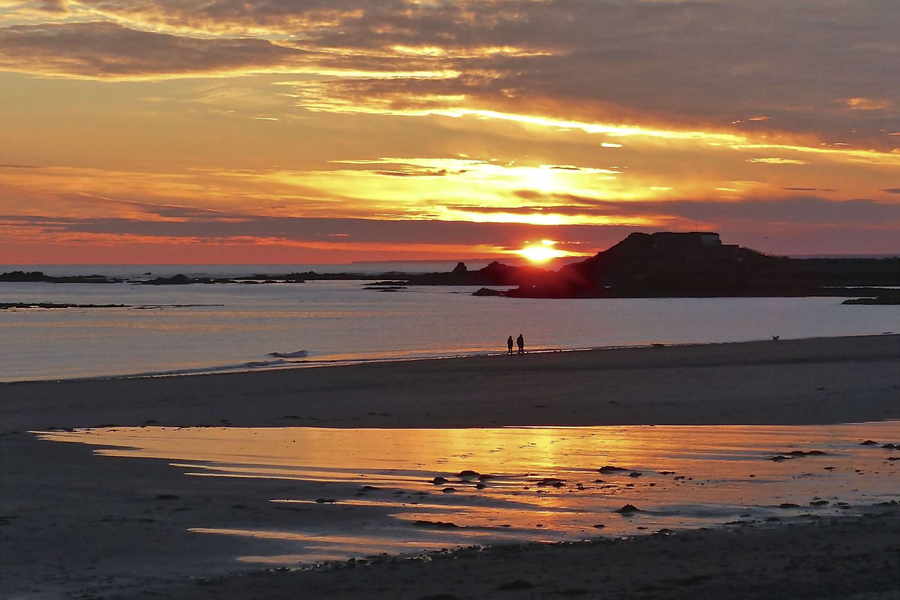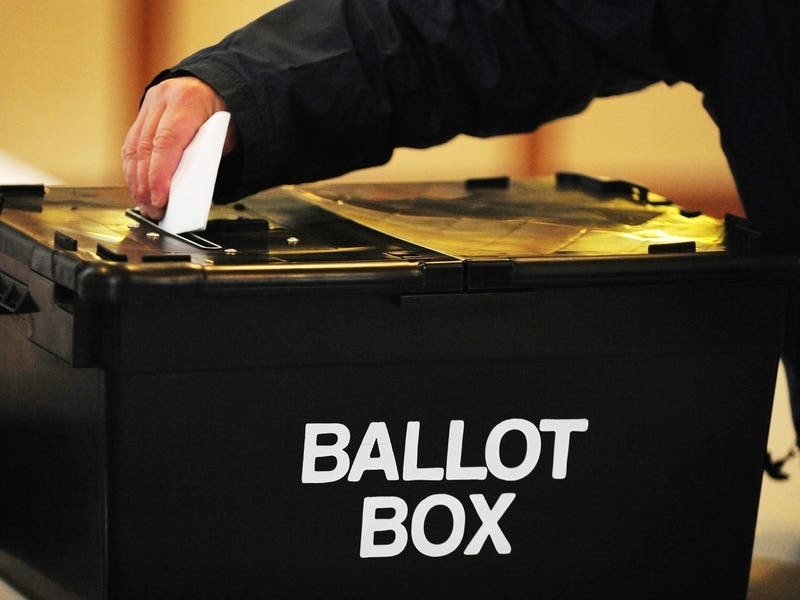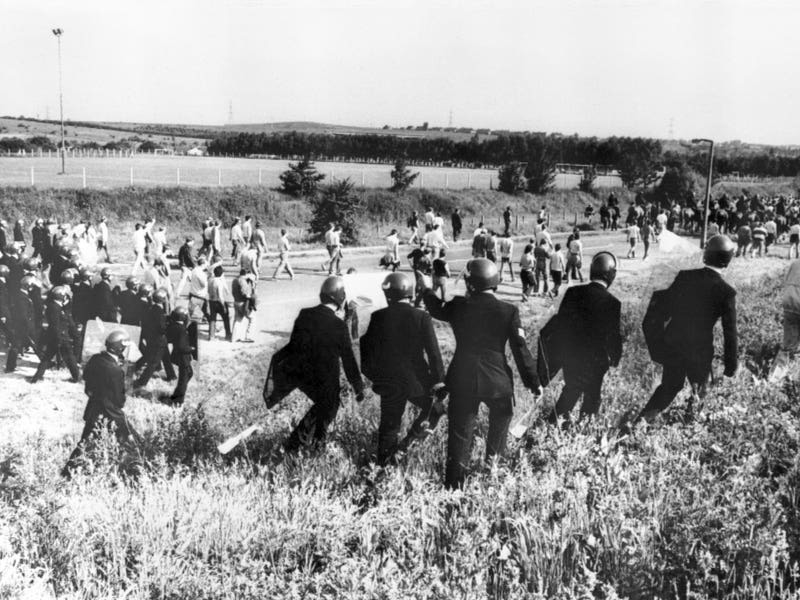- Mondays quake was the fourth to strike this year
- Mercury hit 24.9°C yesterday
- Warmer weather to continue this weekend
FOLLOWING a recent cool spell – and even an earthquake on Monday – Islanders were treated to hotter conditions yesterday as temperatures climbed to 24.9°C.
And the warmer weather is expected to continue over the coming days, with forecasters predicting a dry weekend with temperatures set to stay in the low 20s.
Islanders enjoyed 24.9ºC yesterday despite the cloudy and wet weather at the beginning of the week.
- On 30 April 1990 an earthquake measuring 3.5 in magnitude was felt across the Island. People reported houses shaking and heavy objects falling.
- On 11 July last year thousands of Islanders felt the 35th-largest ever recorded earthquake in the British Isles, which measured 4.3 in magnitude. Several other tremors were reported in the weeks afterwards which made more than 20 recorded quakes in the month of July.
- On 25 February this year an earthquake measuring 2.9 struck the Island, with one Islander reporting that toads started to croak just before the quake and another saying her cat sat up and looked around
And according to official recordings, Jersey also experienced an earthquake on Monday which measured 1.3 in magnitude.
The Jersey Met Office said that the epicentre of the quake, which happened at about 3.49 am on Monday, was 13 kilometres east of St Martin, with the tremor reportedly felt by one Islander in St John.
It was the fourth earthquake to be recorded in the Island this year and followed one that measured 2.9 in magnitude in February which was felt by thousands of Islanders.
By comparison, there were more than 20 small earthquakes recorded in July last year in the Channel Islands.
Today’s temperature will be slightly cooler than yesterday’s and is expected to reach about 22ºC, which is due to be maintained over the weekend.
Jersey Met Office said that although the weekend will see much cooler temperatures than yesterday’s high, the weather will remain dry over the next few days, but the Island could see some rainfall early next week.
The current average minimum temperature of 16°C is roughly 2°C warmer than the expected average for the time of year.

Joanna Chambers, duty forecaster at Jersey Met Office, said: ‘We are expecting 23ºC by the end of the weekend.
‘We will have a dry few days, but in the early part of next week there is potential for some rain.
‘The average minimum temperature for this time of year is about 14ºC, so 16ºC is good news for many people.’
Although yesterday’s temperature was not the highest in July this year, last year’s hottest day in the month of 27.5°C has already been topped in the past two weeks.
Jersey warmest day so far this year was 30 June, when the temperature reached 33°C.
‘That was the warmest June day since records began.’
- 1926/7 – On 30 July 1926, a relatively large earthquake was measured in the Channel, with Islanders reporting feeling the quake. The 5.5-magnitude quake, which hit shortly after lunchtime, was the largest the Island has seen. Just seven months later, in February 1927, the Island suffered another earthquake measuring over five on the Richter scale, this time measuring 5.4. Although relatively large for the UK, the quakes were measured deep underground and there were no lasting consequences from the tremors.
- 1990 – On 30 April 1990 a 3.5-magnitude earthquake started just south of St Aubins Bay and was felt throughout the Island. As well as a number of reports in Jersey, the quake was powerful enough to be felt in Guernsey, although at a much lower intensity. People reported houses shaking and heavy objects falling, although no structural damage occurred.
- 2002 – A high-intensity quake was measured on 19 November 2002. Although smaller than the quake of 1990, the 2.5-magnitude quake combined with its locality meant that residents throughout the Island felt the tremors. The quake lasted nearly a minute and is at present the largest 21st century earthquake measured in Jersey.
- 2013 An earthquake hit Jersey on Boxing Day, which measured 1.8 on the Richter Scale.
- 2014 There was a huge spike in the number of earthquakes to have hit Jersey with eight quakes hitting the Island or its water in the space of eight days during July. The first was a 4.2 magnitude quake – the largest seen in the Channel Islands for nearly 90 years and the 35th largest ever recorded across the British Isles. Jersey Met described the large number of earthquakes as very unusual, though many were too small to be felt by Islanders.
[/breakout]
[related_posts title=”More stories:”]

Compared with much of the UK, Jersey is a hive of earthquake activity, although the vast majority of ‘quakes measured in the Island are so small they are not felt by Islanders.
Tony Pallot, principal meteorological officer at the Met Office, said that most do not start in the Island, but rather in the Channel.
‘The most favoured spot for earthquakes over here is probably halfway between here and France,’ he said. ‘Most of what causes them is just settlement of the underlying rocks around this area.’
This settlement causes underground movement which, at a high enough magnitude, causes tremors that can be felt above ground.
Mr Pallot added: ‘It depends where the ‘quake is as to whether or not it is felt. If it’s a local one, somewhere around the Island, then it probably needs to be at least 1.5 magnitude for people to be able to feel it.
‘There was quite a big one a few years ago in Brittany which was a magnitude of around four, which was felt over here. Obviously, the further away the bigger they have to be for us to actually feel them.’
As well as the magnitude, there are a number of contributory factors as to whether or not a ‘quake is felt.
‘There are lots of different issues to factor in – where it started, depth, what you are doing at the time,’ said Mr Pallot. ‘It can depend on the rock structure on which you are standing because the way the seismic wave behaves may be different depending on what sort of structures you are on, whether it’s sand or soil or something that is directly connected to the bedrock.
‘And because of the low intensity of earthquakes over here, it depends where you are. If you have a lot of distractions around you, you probably won’t notice it, but if you’re somewhere quiet you’re more likely to.’
In terms of measurements on the Richter scale, the tremors recorded in Jersey are comparatively small in earthquake terms, and there are very few accounts of measurements over three. ‘All of the earthquakes we get over here are very small,’ said Mr Pallot. ‘Your big earthquakes – magnitudes of six, seven and eight – all occur on plate boundaries, and the nearest plate boundary to here is probably the mid-Atlantic ridge.’
The largest ‘quakes ever recorded in the Channel Islands date back as far as the 1920s, when in consecutive years the Island was hit by two ‘quakes with magnitudes over five, two of the largest recorded in the British Isles.
The Equipment

IT was the two earthquakes in the 1920s that prompted the introduction of a seismometer to the Island at the Maison St Louis Observatory by the Jesuit priest Father Père Charles Rey, who recorded and forecasted the daily weather.
After using the original seismometer for decades, the Met Office installed new modern equipment in 1981 in conjuncture with the British Geological Survey and Jersey Water.
Following reports of activity around Val de la Mare, Jersey Water was interested in seeing the level of activity around the reservoir. At the same time, the BGS was introducing seismometers across the UK to measure activity throughout the British Isles.
Mr Pallot added: ‘The British Geological Survey was keen to set up at least one seismometer in the Channel Islands, and we were keen to replace our ageing seismometer with something a bit more modern.
‘We ended up with a three-party arrangement, and the British Geological Survey installed four seismometer sets, one under the tunnels at St Aubin, one not far from the dam at Val de la Mare, one up at Les Platons and a complete three-station set at Maison St Louis.’
The three-station set at the observatory measures along three planes – the vertical, east-to-west and north-to-south directions – as opposed to the other three seismometers, which measure only on the vertical plane.
Mr Pallot said: ‘They work by having a coil sitting on a couple of very light hairsprings in a magnetic field. As the coil moves up and down it will generate an electrical signal.
‘This gives us a nice little micro-network which allows the BGS to analyse any microseismic activity in and around the Channel Islands.’
The equipment has remained the same since 1981, although the way in which the movement is recorded has improved dramatically, with the BGS now able to receive electronic signals in real time. ‘If something happens, they probably know about it before we do,’ said Mr Pallot. ‘As you saw with the Boxing Day ‘quake, by the afternoon we knew where it was, we knew what magnitude it was and all the other information. That’s the difference 20 years has made in getting data back.’






